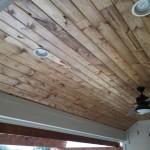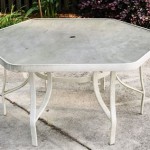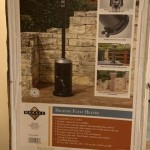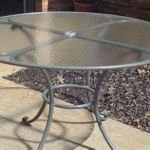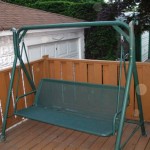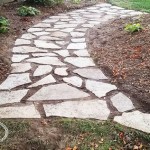Sliding Patio Doors with Built-In Blinds and Grids: A Comprehensive Overview
Sliding patio doors provide convenient access to outdoor spaces while enhancing natural light and ventilation within a building. Integrating blinds and grids within the design of these doors offers several advantages in terms of aesthetics, privacy, and maintenance. This article provides an in-depth look at sliding patio doors with built-in blinds and grids, examining their features, benefits, installation considerations, and overall value proposition.
Understanding the Components: Blinds, Grids, and Door Construction
Sliding patio doors with built-in blinds and grids are composed of several key components working in conjunction. The door itself typically consists of two or more panels that slide horizontally along a track system. These panels are typically made from durable materials like vinyl, aluminum, wood, or fiberglass. The glass used in these doors often has energy-efficient properties, such as low-E coatings and argon gas fills, to improve insulation and reduce energy consumption.
The blinds are integrated within the glass panes of the door, typically sealed within a compartment between two panes of glass. This protects them from dust, damage, and moisture. The blinds are operated by a mechanism, which can be either manual or motorized, allowing for adjustment of light and privacy levels. Common blind materials include aluminum, vinyl, or fabric.
Grids, also known as muntins or grilles, are decorative elements placed on or within the glass panes to create a divided-light appearance. Grids can be permanently attached to the glass surface or integrated between the glass panes. They are typically made of materials such as vinyl, wood, or aluminum and are available in various patterns and styles, enhancing the aesthetic appeal of the door.
Advantages of Integrated Blinds and Grids
The inclusion of built-in blinds and grids offers numerous advantages compared to traditional blinds or curtains that are attached to the door frame separately. These benefits encompass aesthetics, functionality, and long-term cost savings.
One significant advantage is enhanced aesthetics. The integrated design provides a clean, streamlined appearance, as the blinds and grids are seamlessly integrated into the door structure. This eliminates the bulky look of external blinds or curtains and allows for unobstructed views when desired.
Privacy control is another crucial benefit. Built-in blinds offer precise control over the amount of light and visibility entering the room. With a simple adjustment, residents can easily block out unwanted sunlight or maintain privacy from neighbors or passersby.
Maintenance is minimized with built-in blinds and grids. Since the blinds are sealed within the glass unit, they are protected from dust, dirt, and damage. This significantly reduces the need for cleaning and maintenance compared to external blinds or curtains, which can accumulate dust and require regular cleaning or replacement.
Energy efficiency is also improved. The sealed compartment containing the blinds acts as an additional layer of insulation, helping to reduce heat transfer and improve the overall energy performance of the door. This can lead to lower energy bills and a more comfortable indoor environment.
Durability is enhanced due to the protection offered by the sealed compartment. The blinds are shielded from external elements, extending their lifespan and reducing the likelihood of damage or wear and tear. The integrated design also eliminates the risk of tangled cords or broken slats, which are common issues with traditional blinds.
Safety is improved for households with children and pets. Built-in blinds eliminate dangling cords, which can pose a strangulation hazard for young children and pets. This creates a safer environment for families with small children or animals.
Space saving is another important benefit. Since the blinds are integrated within the door, they do not take up additional space in the room. This is particularly beneficial in smaller spaces where every square inch counts.
Installation Considerations and Best Practices
Proper installation is crucial for ensuring the optimal performance and longevity of sliding patio doors with built-in blinds and grids. It is generally recommended to hire experienced professionals for installation to avoid potential issues such as leaks, drafts, or misalignment.
Before installation, the opening should be carefully measured to ensure that the door fits properly. The existing frame should be inspected for any signs of damage or rot, and repairs should be made as needed. The subfloor should be level and stable to provide a solid foundation for the door.
During installation, the door should be carefully positioned and secured in the opening. The track system should be aligned properly to ensure smooth and effortless sliding. The perimeter of the door should be sealed with caulk to prevent air and water infiltration.
The blind operating mechanism should be tested thoroughly to ensure that it functions smoothly and accurately. The grids should be inspected for any damage or misalignment. Any necessary adjustments should be made to ensure optimal performance.
After installation, the door should be properly maintained to ensure its longevity. Regular cleaning of the glass and frame is recommended to remove dirt and debris. The track system should be lubricated periodically to ensure smooth sliding. Any necessary repairs should be made promptly to prevent further damage.
Consider the climatic conditions when selecting the patio door. In areas with extreme temperatures, ensure that the door has adequate insulation to prevent heat loss or gain. In coastal areas, choose materials that are resistant to corrosion and salt damage.
Verify that the door meets local building codes and regulations. This may include requirements for energy efficiency, safety, and accessibility.
Consider the security features of the door. Choose a door with a robust locking system to deter intruders. Options include multi-point locking systems, reinforced frames, and impact-resistant glass.
Design and Aesthetic Considerations
Sliding patio doors with built-in blinds and grids are available in a wide range of styles and designs to complement various architectural aesthetics. The choice of materials, colors, and grid patterns can significantly impact the overall appearance of the door and its integration with the surrounding décor.
Vinyl patio doors are a popular choice due to their affordability, durability, and low maintenance requirements. They are available in a variety of colors and finishes to match different design preferences. Vinyl doors are also energy-efficient and resistant to warping or rotting.
Aluminum patio doors are known for their strength, durability, and sleek appearance. They are often used in contemporary designs due to their clean lines and modern aesthetic. Aluminum doors are also resistant to corrosion and require minimal maintenance.
Wood patio doors offer a classic and elegant look that can enhance the warmth and character of a home. They are available in a variety of wood species and finishes, allowing for customization to match existing décor. Wood doors require regular maintenance to protect them from moisture and damage.
Fiberglass patio doors offer a combination of strength, durability, and energy efficiency. They are resistant to warping, rotting, and insect damage, making them a low-maintenance option. Fiberglass doors can be painted or stained to match different design styles.
Grid patterns can significantly impact the aesthetic appeal of the door. Common grid patterns include colonial, diamond, and prairie styles. The choice of grid pattern depends on the desired aesthetic and the overall design of the home.
Blind colors can also be customized to match the interior décor. Consider the overall color scheme of the room and choose a blind color that complements the existing furnishings and finishes.
Hardware finishes, such as handles and locks, can also be selected to enhance the aesthetic appeal of the door. Choose hardware finishes that complement the overall design and style of the door and the surrounding décor.
Consider the size and configuration of the door. Sliding patio doors are available in various sizes and configurations to suit different opening sizes and design requirements. Choose a door size and configuration that is appropriate for the space and the desired level of access and ventilation.
Evaluate the sightlines of the door. Consider the views from inside the room and ensure that the door provides unobstructed views of the outdoor space. The placement and style of the grids can impact the sightlines, so choose a design that maximizes the viewing area.

Which Type Of Patio Door Is Best For Your Home Pella

Before And After Sliding Door With Retractable Screen Pella

Mmi Door 75 In X 81 Clear Glass Internal Blinds Grilles Fiberglass Prehung Left Hand Full Lite Stationary Patio Z001622l The Home Depot Doors Sliding

Between The Glass Blinds For Patio Doors Pella

Mmi Door 71 In X 81 75 Clear Glass Internal Blinds Grilles Fiberglass Prehung Right Hand Full Lite Stationary Patio Z001621r The Home Depot Doors French

Introducing New Patio Door Enhancements Viwinco Windows

Mmi Door 32 In X 80 Internal Blinds Grilles Right Hand Outswing Full Lite Clear Primed Fiberglass Smooth Prehung Front Z0364948r The Home Depot

Grid White Color Aluminium Alloy Sliding Door With Fashion Handle Lock China Aluminum Made In Com

Blinds And Grilles Between The Glass Patio Doors At Com

Before And After Sliding Door With Retractable Screen Pella

